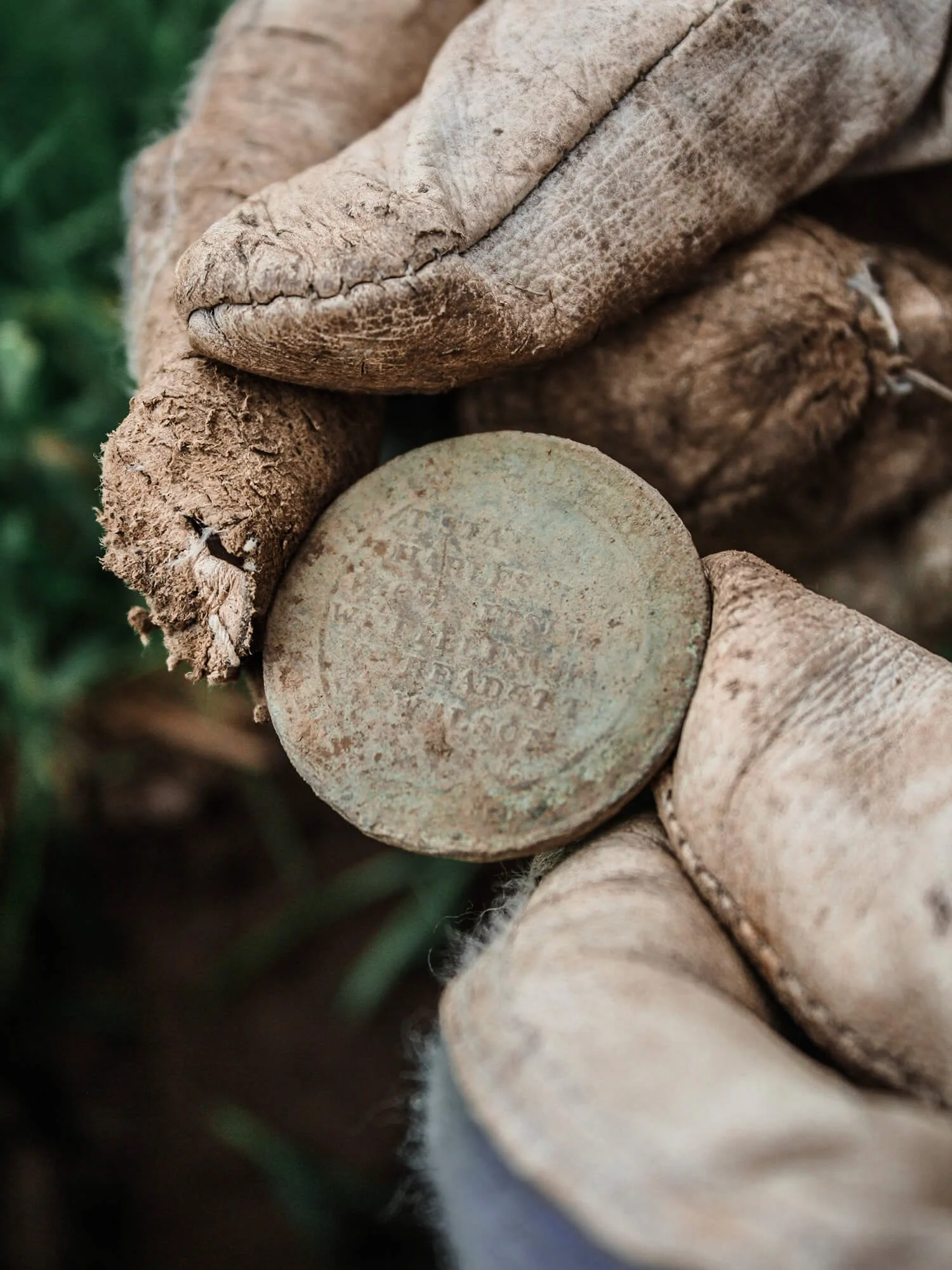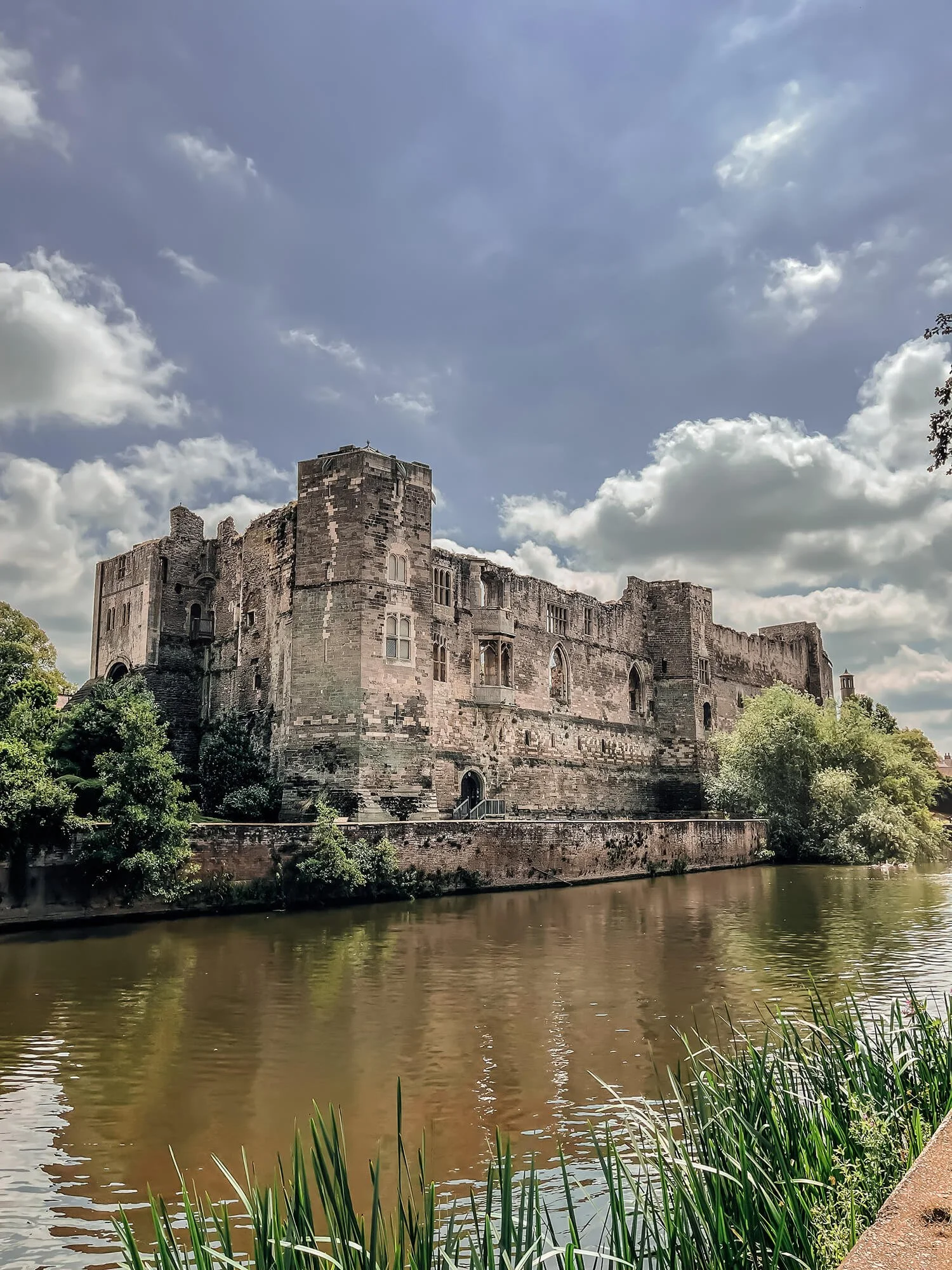TRADE TOKEN 1811
PERIOD: POST MEDIEVAL LOCATION: LINCOLNSHIRE, UK DIAMETER: 35mm MATERIAL: COPPER ALLOY
It had been a pretty dry day on all fronts: dry in weather and very dry in finds, with not even a single button occupying our rather sorry looking finds tin. The baking heat of the day had the locals providing valuable lunch break shelter that came with a glass of ice water and a slice of that famous lemon drizzle cake!
It was the time of year where pasture was the only digging land available, we were still building up our relationship with the estate and it’s tenants while the crops had taken root across the arable fields. Unsurprisingly battering through the deep undergrowth and long grass of a field left for hay wasn’t turning up any goods. In a last minute ditch effort for that long sought after find of the day we were driven into our final piece of untouched pasture: a small sloping field with a public footpath running through it.
Anyone who digs knows it’s not always gold under the shovel, or silver, or really anything other than a shotgun shell or ring pull (Yes they really are the plagues of the hobby!) but that’s what make’s metal detecting so addictive, the what if’s. What if the next hole is what we’ve been waiting for and we just haven’t walked over it yet?
‘Newark Token For One Penny’ - 1811
These questions normally drive Roman Found into crazy territory. Digging late into the evening, finding it hard to stop just in case this time it really was our day. For us, getting out of that hay field was the right decision. We found the find that would send us home: a humble 19th Century Trade Token. Not a find high on many people’s bucket lists (we can imagine) but at this stage in our digging adventures and after a long day of can slaw and shotgun cartridges, we might as well have found gold.
Not too far relocated from its home of origin, our 1811 Newark Trade Token reveals some fascinating local history from the 19th Century. Trade Tokens themselves are an intriguing form of coinage as they often reveal more about the social history from their time than the official coinage. Minted by locals they often featured important local attractions or features that have sometimes been lost to history.
So what caused our trade token to be created? Well there was a gap in the currency system at the time, an economic crisis caused by the Napoleonic Wars meant no official copper coinage was minted from 1807 - 1821. Simply, there was no profit in making small change and all profits needed to be directed to the war effort. This left people literally struggling to fill their pockets with change.
Watch the recovery footage
This is where the local merchants step in and start minting their own small change to pay their workers. Trade tokens could usually only be spent back with the company that issued them so served as useful advertising and kept workers loyal in a crisis. In Newark, 6 local industrial merchants (T Stansall, Charles Moor. Richard Fisher, WM Fillingham & WM Readett. T Wilson) all joined forces to issue one blanket currency across their businesses. A currency that included our one penny trade token which would have featured a detailed engraving of Newark Castle on the reverse.
Armed with the information revealed to us by our find, we took our trade token to Newark Castle to really get a feel for its history and to see the local monument that 19th Century traders felt was so important they made it into the emblem of their currency.
From the far banks of the river, Newark Castle, even in its ruined shell remains a formidable fortress upon the River Trent. Built around the year 1073 by the Bishop of Lincoln it has sat proudly on the riverbank as a symbol of strength to the industrious local businesses for centuries. A piece of local history that we never would have discovered if we had kept battering through the undergrowth.





